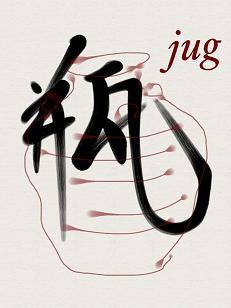Work in Japan Advice Board


- Jobs in Japan @ Daijob.com
- Eco Design: A New Paradigm
Creative Career Path
Eco Design: A New Paradigm2011.11.01

With energy saving and the environment such a pressing concern, Eco has been a buzz word in Japan for some time. An abbreviation of the word Ecology, Eco is now emerging in a new generation of concepts and products that are distinctly Japanese and have a global appeal. Among these is the term Eco Design.
A design is a plan or an approach to a product or system. It can be applied to nearly anything that the human mind can conceive and craft by hand. For engineers ecological design tends to fall in the category of environmentally friendly solutions such as recycling, use of natural materials, and energy saving. It critically important to our survival that we consume and produce in a way that is sustainable and does not simply magnify our problems for future generations to solve.
Pure magic happens when Eco Design is enhanced with the skills of architects and craftsmen. Japanese craftsmanship is loved around the world for the way it blends artistic skill with natural design. The roots of Japanese design go deep into the heart and soul of the Eco spirit, to appreciate, engage with, and feel a part of our environment. I recently participated in a special project to capture impressions about Eco Design from the perspective of a long-time foreign resident of Japan.
The first day was filmed at the Nezu Museum http://www.nezu-muse.or.jp, with a personal tour by the curator, who offered many insights into the design concept of the building, tea houses, and gardens. Founded in 1941 to preserve the personal collection of NEZU Kaichiro (1860~1940), president of Tobu Railway, the collection is particularly strong in arts related to tea, and features a revolving display of more than 7,000 items ranging from calligraphy to sculpture, ceramics, lacquer, bamboo crafts and textiles, including a number of objects designated as National Treasures. The building was renewed in 2009, designed by Architect KUMA Kengo. The approach leads you in stages into another world. The entrance is along a bamboo wall under a remarkable roof overhang that is reminiscent of the crisp folds of an origami crane. The approach itself is at right angles to the entrance, as is the entrance to the building itself, leading you in stages to the entrance hall basked in natural light. A wall of glass reveals the tea houses and gardens, which beckon you to a world several dimensions removed from the city about.
The second day was spent exploring the Nihon Mingeikan Museum http://www.mingeikan.or.jp/, dedicated to Japanese Folk Crafts, but also featuring beautiful objects made in Korea, China, England, and Africa. The revolving collection contains over 17,000 objects, so each visit can be new. Built in 1936, the traditional building welcomes you with warm wood and natural light. Founded by Yanagi Muneyoshi (1889~1961), one of the founders of the Mingei (Folk Craft) Movement, dedicated to preserving crafts that were being swept aside by the Industrial revolution and mass production. It is the first museum that I have spent hours inside without any sense of fatigue. Even the chairs have woven seats that dip in toward the center, making you want to sit a long time and soak it all in. The son of the founder Yanagi Sōri, is himself one of Japan's most renowned designers. You have very likely seen kitchenware designed by Yanagi Sōri, characterized by its modern art feel and handcrafted curves. He is famous for the butterfly stool and elephant stool, highly appraised for its design by MoMA, the Museum of Modern Art in New York.
A classic book on the aesthetics of Japanese crafts is The Unknown Craftsman: A Japanese Insight into Beauty, by Yanagi Muneyoshi. This book, and a visit to the places I have described, will give you a deeper appreciation for how to live with grace and appreciation, deeply imbibing the spirit of Eco Design.
William Reed
WEBSITE: http://www.williamreed.jp
WEB TV: http://williamreed.tv
NANBA: http://www.nanbanote.com
iPAD CREATORS CLUB: http://ipadcreatorsclub.com
Article Writer
William Reed is a renowned author-speaker who coaches physical finesse and flexible focus for a creative career path. A certified Master Trainer in Guerrilla Marketing and 7th-dan in Aikido, he combines practical wisdom of East and West to help you learn personal branding at the Entrepreneurs Creative Edge.
Similar Articles
- 2015.08.04A Comparison between Western and Asian D...
- 2015.07.28Being an Effective Communicator
- 2015.07.21Making Your Presentation Interactive




